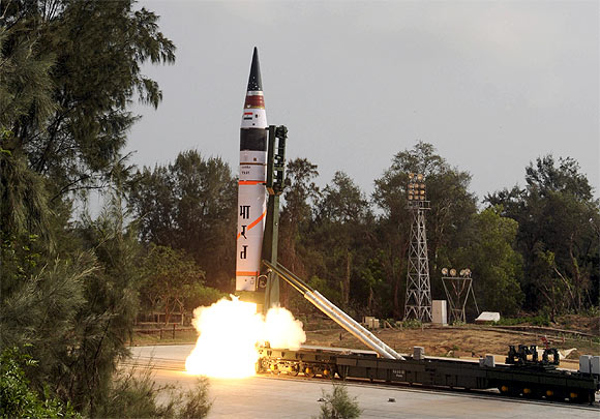The last launch operations of the Agni-V were carried out and monitored by the Strategic Forces Command (SFC) in the presence of Scientists from Defense Research and Development Organization (DRDO) and other associated officials.
Development of the Agni-V began in 2008. The ICBM features indigenously designed navigation and guidance systems including a ring laser gyroscope based inertial navigation system.
According to Indian military sources, the Agni-V ICBM is a three-stage solid-fueled missile with an approximate range of 5,500-5,800 kilometers. The exact range remains classified, but it is assumed that the missile could have a range from 6,000 to 7,500 kilometers, and can carry a 1,500 kg nuclear warhead. India has reportedly also been working on multiple independently targetable reentry vehicles (MIRV) for the Agni-V in order to ensure a credible second-strike capability.
The Agni-V can be mounted on a launcher vehicle which is known as the Transport-cum-Tilting vehicle-5. It is a 140-ton, 30-metre, 7-axle trailer pulled by a 3-axle Volvo truck according to DRDO, Indian Defence Research and Development Organisation.
Source: AR
Image Courtesy: Money Control
You may also like
-
IAF Aircraft Set Course For Exercise Eastern Bridge VII At Oman
-
IAF Set To Host The Indian Defence Aviation Exposition-II At Jodhpur
-
Defence Secretary to co-chair 5th India-Philippines Joint Defence Cooperation Committee meeting in Manila
-
Simultaneous Launch Of ‘malpe And Mulki’, Fourth And Fifth Ships Of Asw Swc (Csl) Project
-
Aatmanirbharta in Defence: MoD signs Contract with HAL for 240 AL-31FP Aero Engines for Su-30MKI Aircraft
